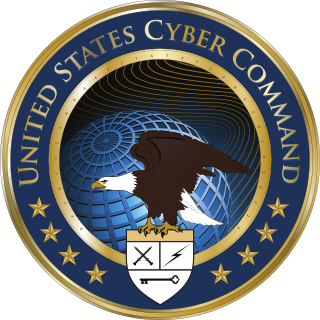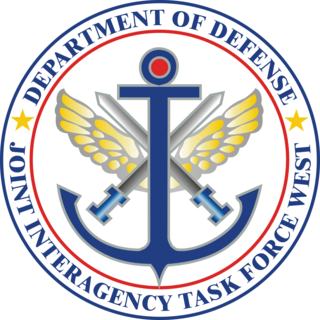
The National Cyber Security Division (NCSD) is a division of the Office of Cyber Security & Communications, within the United States Department of Homeland Security's Directorate for National Protection and Programs. Formed from the Critical Infrastructure Assurance Office, the National Infrastructure Protection Center, the Federal Computer Incident Response Center, and the National Communications System, NCSD opened on June 6, 2003. The NCSD mission is to collaborate with the private sector, government, military, and intelligence stakeholders to conduct risk assessments and mitigate vulnerabilities and threats to information technology assets and activities affecting the operation of the civilian government and private sector critical cyber infrastructures. NCSD also provides cyber threat and vulnerability analysis, early warning, and incident response assistance for public and private sector constituents. NCSD carries out the majority of DHS’ responsibilities under the Comprehensive National Cybersecurity Initiative. The FY 2011 budget request for NCSD is $378.744 million and includes 342 federal positions. The current director of the NCSD is John Streufert, former chief information security officer (CISO) for the United States Department of State, who assumed the position in January 2012.

United States Strategic Command (USSTRATCOM) is one of ten unified combatant commands in the United States Department of Defense. Headquartered at Offutt Air Force Base, Nebraska, USSTRATCOM is responsible for strategic deterrence, global strike, and operating the Defense Department's Global Information Grid. It also provides a host of capabilities to support the other combatant commands, including strategic warning; integrated missile defense; and global command, control, communications, computers, intelligence, surveillance, and reconnaissance (C4ISR). This dynamic command gives national leadership a unified resource for greater understanding of specific threats around the world and the means to respond to those threats rapidly.

The United States Transportation Command (USTRANSCOM) is one of ten unified commands of the United States Department of Defense. The command is located at Scott Air Force Base, Illinois, and was established in 1987.

The Office of the Secretary of Defense (OSD) is a headquarters-level staff of the United States Department of Defense. It is the principal civilian staff element of the U.S. Secretary of Defense, and it assists the Secretary in carrying out authority, direction and control of the Department of Defense in the exercise of policy development, planning, resource management, fiscal, and program evaluation responsibilities. OSD is the Secretary of Defense’s support staff for managing the Department of Defense, and it corresponds to what the Executive Office of the President of the U.S. is to the U.S. president for managing the whole of the Executive branch of the federal government.
The Joint Functional Component Command for Intelligence, Surveillance and Reconnaissance is a subordinate command of the United States Strategic Command, one of the nine Unified Combatant Commands under the United States Department of Defense (DOD) and co-located with the Defense Intelligence Agency (DIA). In its relatively new status, it serves as the center for planning, execution and assessment of the United States military's global Intelligence, Surveillance, and Reconnaissance operations; a key enabler to achieving global situational awareness.

The United States Under Secretary of Defense for Policy (USDP) is a high level civilian official in the United States Department of Defense. The Under Secretary of Defense for Policy is the principal staff assistant and adviser to both the Secretary of Defense and the Deputy Secretary of Defense for all matters concerning the formation of national security and defense policy.

Critical infrastructure protection (CIP) is a concept that relates to the preparedness and response to serious incidents that involve the critical infrastructure of a region or nation.
The Joint Capabilities Integration and Development System (JCIDS), is the formal United States Department of Defense (DoD) process which defines acquisition requirements and evaluation criteria for future defense programs. JCIDS was created to replace the previous service-specific requirements generation system that allowed redundancies in capabilities and failed to meet the combined needs of all US military services. In order to correct these problems, JCIDS is intended to guide the development of requirements for future acquisition systems to reflect the needs of all four services by focusing the requirements generation process on needed capabilities as requested or defined by one of the US combatant commanders. In an ideal implementation of the JCIDS process, regional and functional combatant commanders give early and continuous feedback into the acquisition and sustainment processes to ensure their current and evolving requirements are known and met.

The Under Secretary of Defense for Intelligence or USD(I) is a high-ranking civilian position in the Office of the Secretary of Defense (OSD) within the U.S. Department of Defense that acts as the principal civilian advisor and deputy to the Secretary and Deputy Secretary of Defense on matters relating to military intelligence. The Under Secretary is appointed from civilian life by the President and confirmed by the Senate to serve at the pleasure of the President.

The Under Secretary of Defense for Personnel and Readiness, or USD (P&R), is a high-ranking civilian position in the Office of the Secretary of Defense (OSD) within the United States Department of Defense responsible for advising the Secretary and Deputy Secretary of Defense on recruitment, career development, pay and benefits, and oversight of the state of military readiness. The Under Secretary is appointed from civilian life by the President and confirmed by the Senate to serve at the pleasure of the President.
Capability management is a high-level integrative management function, with particular application in the context of defense.
The Advanced Distributed Learning (ADL) Initiative is a US government program that conducts research and development on distributed learning and coordinates related efforts broadly across public and private organizations. ADL reports to the Deputy Assistant Secretary of Defense for Force Education and Training in the US Department of Defense (DoD). Although a DoD program, ADL serves the entire US federal government, operates a global partnership network including international defense ministries and US-based academic partners, and collaborates closely with industry and academia. ADL advises the DoD and US government on emerging learning technologies, best practices for improving learning effectiveness and efficiency, and methods for enhancing interoperability. Notable ADL contributions to distributed learning include the Sharable Content Object Reference Model (SCORM), Experience API (xAPI), and the DoD Instruction 1322.26.

United States Cyber Command (USCYBERCOM) is one of ten unified commands of the United States' Department of Defense. It unifies the direction of cyberspace operations, strengthens DoD cyberspace capabilities, and integrates and bolsters DoD's cyber expertise.

The Air Force Safety Center is a Field Operating Agency with headquarters at Kirtland Air Force Base, N.M.

The U.S. Army Combat Readiness Center (USACRC) is a United States Army organization. The Army Safety Team provides safety and risk management expertise to the Army, DoD, and other agencies; develops, maintains and evaluates Army Safety policy and programs; and communicates relevant risk management information to Army Leaders for the preservation of our Soldiers, Civilians, Families and vital resources. It is located at Fort Rucker, Alabama, alongside the Army's major flight training unit.

Joint Interagency Task Force West is a standing United States military joint task force with the mission of combating drug-related transnational organized crime in the Indo-Asia-Pacific. JIATF West's area of responsibility (AOR) is that of United States Indo-Pacific Command (USINDOPACOM). JIATF West is one of two Joint Interagency Task Forces with a counter-narcotics mission. The other is Joint Interagency Task Force South. The task force is run as USPACOM's "executive agent" for counterdrug activities providing support to partner nation law enforcement. Approximately 166 active duty and reserve U.S. military forces; Department of Defense civilian employees; contractors; and U.S. and foreign law enforcement agency personnel are members of the task force.

The Defense Equal Opportunity Management Institute (DEOMI) is a U.S. Department of Defense joint services school located at Patrick Air Force Base, Florida, offering both resident and off-site courses in areas including equal opportunity, intercultural communication, and religious, racial, gender, and ethnic diversity and pluralism to civilian and military personnel working with the American armed forces.

IT risk management is the application of risk management methods to information technology in order to manage IT risk, i.e.:
The National Defense Authorization Act (NDAA) for Fiscal Year 2013 is a United States federal law which specifies the budget and expenditures of the United States Department of Defense for Fiscal Year 2013. The full title is An Act to Authorize Appropriations for fiscal year 2013 for military activities of the Department of Defense, for military construction, and for defense activities of the Department of Energy, to prescribe military personnel strengths for such fiscal year, and for other purposes. This law has been assigned the number PL 112-239.

Technology readiness levels (TRLs) are a method for estimating the maturity of technologies during the acquisition phase of a program, developed at NASA during the 1970s. The use of TRLs enables consistent, uniform discussions of technical maturity across different types of technology. A technology's TRL is determined during a Technology Readiness Assessment (TRA) that examines program concepts, technology requirements, and demonstrated technology capabilities. TRLs are based on a scale from 1 to 9 with 9 being the most mature technology. The US Department of Defense has used the scale for procurement since the early 2000s. By 2008 the scale was also in use at the European Space Agency (ESA), as evidenced by their handbook.















